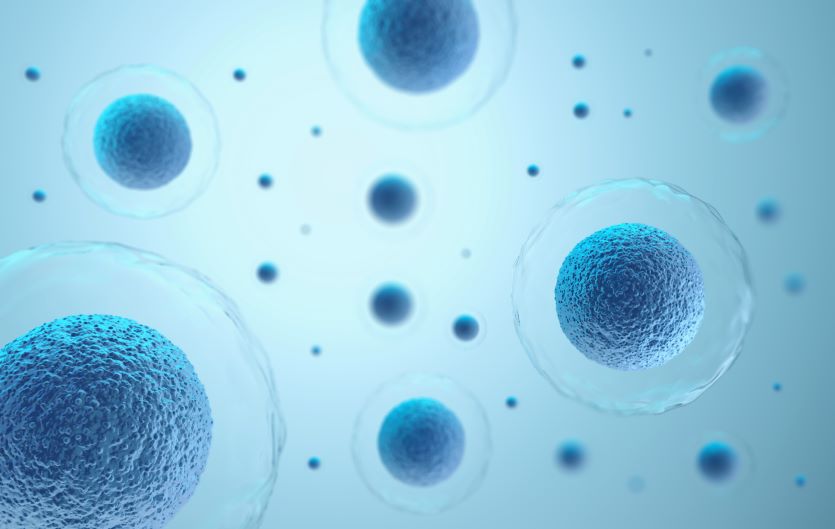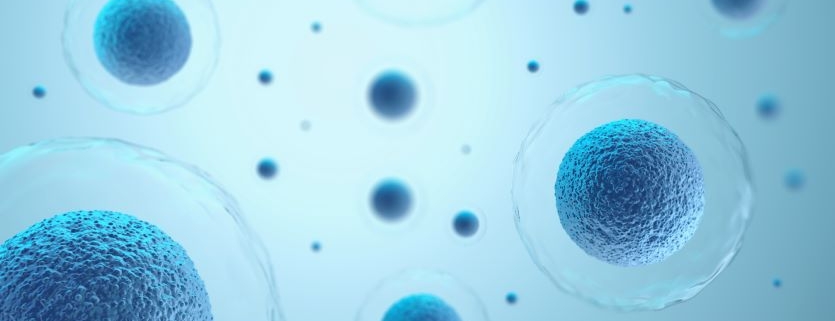You’re 6 Minutes Away from a Better Understanding of Cellular Nutrition

To understand cellular nutrition, you can take the better part of a decade to earn a PhD in microbiology or you can set aside about six minutes to read this story.
Opting for the doctoral route means deeper knowledge, a nice degree to frame, and many fancy words to throw around. But reading on will simply answer four key questions to provide an actionable understanding of possibly the most important topic in nutrition.
And you’ll save a few hundred thousand dollars in the process. The choice is yours.
What’s the difference between cellular and regular nutrition?
One word—scale.
Most people talk about nutrition on a system-by-system or body-wide scale. (Examples: eating fiber helps you feel full and manage your weight, protein supports healthy muscles, or you should target immune-supporting foods in your diet.) But nutrition, like your overall health, starts in the cell.
In fact, properly nourishing your cells should be—and sneakily is—the real aim of all nutrition. The disconnect is that cellular nutrition happens on a microscopic scale, and involves intricate, complicated mechanisms.
More people will follow if you talk about nutrients for brain health or heart-smart snacks than if you wade into the intricacies of how your mighty mitochondria get properly fed. And that’s OK. Any understanding of nutrition is helpful and great for public health.
Just remember, when you’re talking about nutrition in any way, you’re actually discussing cell nutrition. You’re just doing it without drowning in the complexities and verbiage of PhD-level microbiology.
Why is cellular nutrition important?
Maintaining cellular health through proper nutrition is essential to optimizing your overall wellness. That sentence sounds stuffy, but the concept is pretty simple.
You’re made up of cells of different types. If they aren’t fed what’s needed to maintain health, it’s hard to imagine your body, as a whole, feeling great. Put another way: a building made of broken bricks doesn’t stand long.
Cell nutrition is the starting point for maintaining the health of all your large body systems and overall physical wellness. And supporting cellular nutrition doesn’t require a big shift in the usual dietary advice.
You still want the vitamins, minerals, antioxidants, and macronutrients you find in healthy whole foods. (More on this below.) But while munching on your salad, you can think about how you’re doing it for your cells as much as your waistline.
I understand digestion, but it seems like there’s a few steps beyond the basics that help facilitate cell nutrition. So, how do nutrients from the diet eventually enter cells?
Each stage of digestion breaks your food down into smaller and smaller pieces that are more useable. After nutrient absorption happens in the small intestine and the molecules are distributed in the blood, your cells can start chowing down, too.
This part can become confusing, so let’s explore—as simply as possible—three of the main ways nutrients enter cells.
- Route No. 1: The cell opens up a temporary mouth in its membrane and basically swallows what it wants. This process of cellular eating and drinking—usually reserved for bigger molecules—is called endocytosis.
Lipids and proteins in the cell membrane start to form up walls around the molecule trying to enter the cell. This literally looks like a mouth opening up—hence the mouth analogy. As the molecule pushes through the membrane, a bubble is formed around it. That protective coating is then broken down by special proteins in the cell and its nutrient contents are utilized for energy, growth, repair, or whatever the cells need.
- Route No. 2: Nutrients hitch a ride on a carrier protein (such as albumin). This is like a nutrient having an usher accompany it through the membrane’s set of locked doors and into the cell. In more scientific terms, the carrier proteins latch onto the nutrient molecule and help it pass through into the intercellular space.
- Route No.3: Hop into an express lane into the cell—formally referred to as a channel protein. As long as the nutrient molecules pass tests for size, charge, and other properties, it can enter fairly easily through the pores created by channel proteins. These entry avenues can help many more molecules per second pass through the membrane and into the cell than any other path.
No matter the route taken, once inside the cell, nutrient molecules are used for their appropriate purpose to support your health at the cellular level. The glucose from carbohydrates in your diet are broken up and used for energy. Fatty acids (lipids) and amino acids (protein parts) are used as building blocks or energy—depending on what’s needed.
What nutrients are vital for maintaining healthy cell nutrition?
Read enough about nutrition and you’ll experience informational déjà vu. That’s because the human body needs what it needs—most importantly, those nutrients labeled essential. And there are only so many ways to acquire it all.
You should be eating a varied, balanced diet full of whole fruits and vegetables, lean proteins, whole grains, and beneficial fats. That’s the best way to acquire the variety of essential vitamins, minerals, fatty acids, and amino acids your cells need. The “essential” label comes from your body’s inability to make certain substances. So they must be found in your diet. You’ll also contribute other nutrients that can help maintain your health, too.
Now that you know the most important nutrients for cell nutrition, let’s see why they’re so crucial for maintaining health. Taking in all those essential macro- and micronutrients help fill cell nutritional needs and support four basic mechanisms for maintaining cellular and overall health.
- Energy: You can dive deep into cellular energy production and ATP. But, for now, all you need to know is that your cells break the bonds of nutrient molecules to unleash energy.
- Structure (growth and repair): Proteins, fats, and some minerals are used by cells to build or repair cellular and bodily structures.
- Supporting Reactions: Vitamins and minerals act as cofactors for enzymes and support key reactions and processes that keep your body running optimally.
- Protection: Antioxidants can come in the form of vitamins or other nutritional compounds. Either way, they help maintain cellular health by neutralizing free radicals from metabolism and environmental elements.
It’s a lot to accomplish, but you’re made of amazing cells. Your job in the big machine of health is simple: feed your cells all the important nutrients they need to maintain overall health.
The modern diet and lifestyle can make this tricky. You may want to supplement your diet to optimize cellular health. If you choose to, target products with the right forms and amounts of the essential nutrients and beneficial dietary compounds you need most.
References
https://sciencing.com/do-cells-need-food-5408572.html
https://www.bbc.co.uk/bitesize/guides/zs9krwx/revision/1
https://www.nigms.nih.gov/education/Inside-Life-Science/Pages/how-cells-eat-in.aspx
https://www.livestrong.com/article/420556-the-best-foods-to-eat-for-promoting-healthy-cells/
https://www.britannica.com/science/human-nutrition










